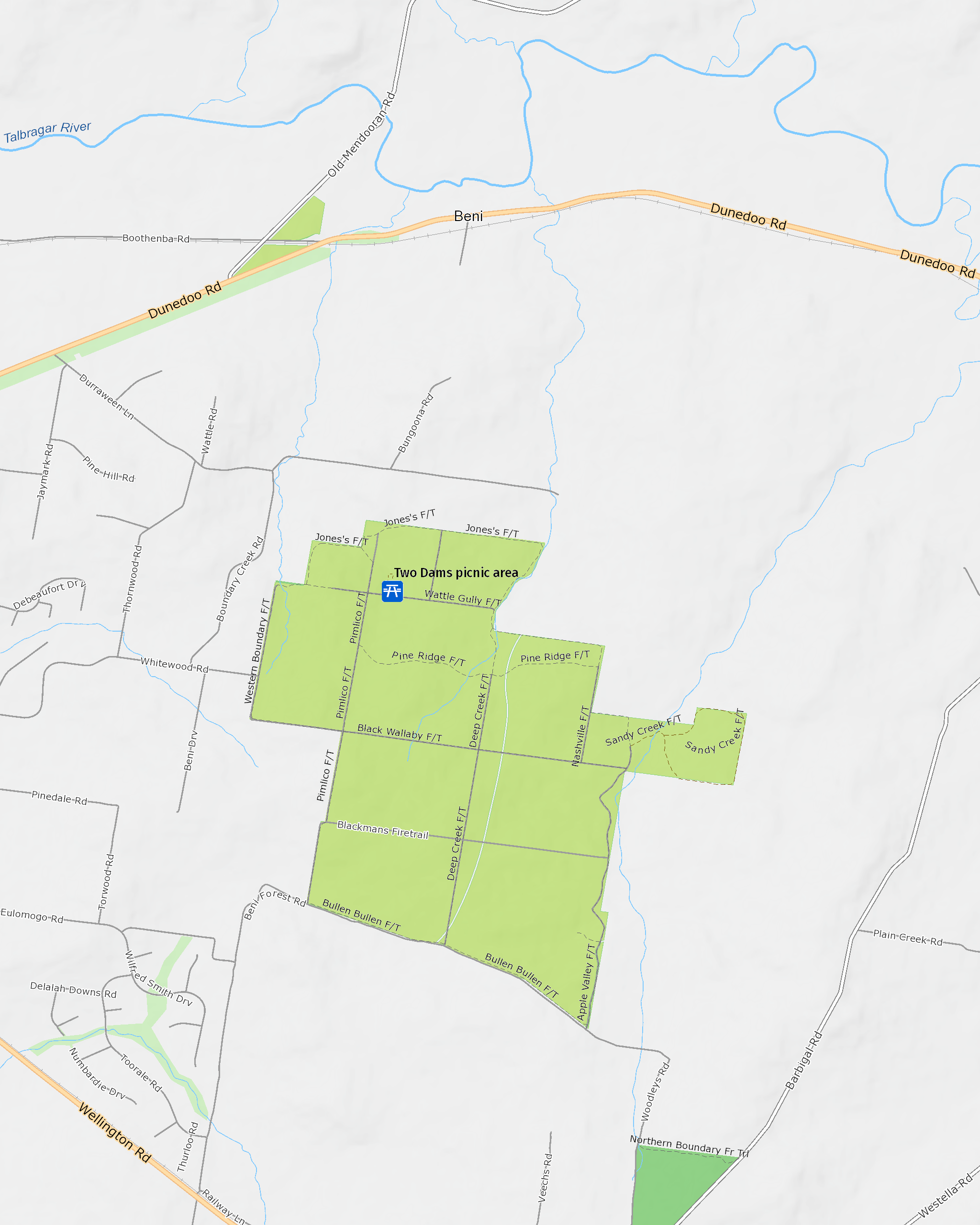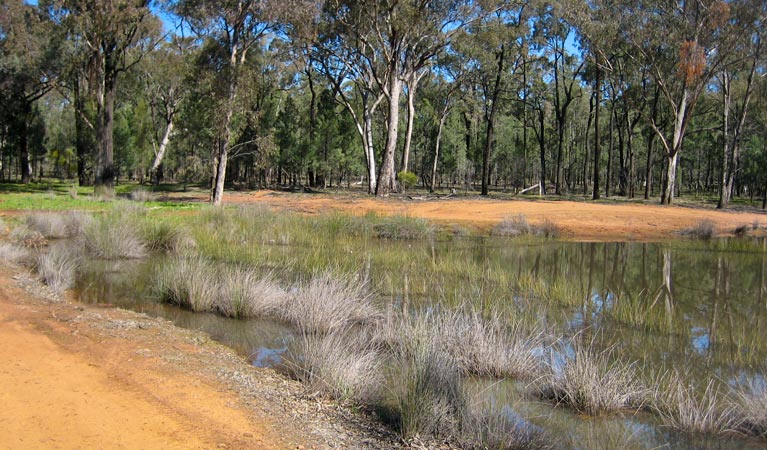Beni State Conservation Area
Overview
Excellent birdwatching, bushwalking, picnicking, cycling and horse riding opportunities await you at Beni State Conservation Area, near Dubbo in central west NSW.
Read more about Beni State Conservation Area
Discover a peaceful oasis just 10km from central Dubbo at Beni State Conservation Area. Offering an idyllic bush experience a stone’s throw from the city, this central west NSW park is loved for its bushwalking and cycling opportunities.
With its fresh air and inviting tracks and trails, you can’t help but feel energised when you visit. Experience cycling, or bring your horse along for horse riding. Check out the area’s scenic landscape and Aboriginal cultural heritage before relaxing with a packed lunch at Two Dams picnic area.
If you like birdwatching, you’re in for a treat at Beni. It’s home to over 140 bird species, including several threatened woodland and waterbirds. Sit and listen as the melody of birdsong mixes with the call of frogs at sunset. And if you’re lucky, you may even see a possum or a wallaby hopping by.
Local alerts
For the latest updates on fires, closures and other alerts in this area, see https://www.nationalparks.nsw.gov.au/visit-a-park/parks/beni-state-conservation-area/local-alerts
Contact
- in the Country NSW region
Beni State Conservation Area is always open but may have to close at times due to poor weather or fire danger.
-
-
Dubbo office
02 6841 7100
Contact hours: Monday to Friday, 8.30am to 4.30pm. - 74 River Street, Dubbo, NSW 2830
-
Email: npws.centralwest@environment.nsw.gov.au
-
Dubbo office
Visitor info
All the practical information you need to know about Beni State Conservation Area.
Map

Map legend

Maps and downloads
Nearby towns
Dubbo (13 km)
Dubbo is an excellent place for families to enjoy together. There are kid-friendly attractions, a wide variety of accommodation, beautiful picnic spots, vast open spaces and the famous Taronga Western Plains Zoo.
Narromine (53 km)
As well as delicious produce and beautiful flower farms, Narromine is rich in aviation history, claiming the country's oldest regional aero club. With some of the best thermals in the world, it's a great place to watch the planes glide by while delving into Australian aviation's rich past.
Wellington (55 km)
Visit the Wellington Caves to admire the huge stalagmite in Cathedral Cave, once thought to be the largest in the world. Don't miss the unusual and beautiful cave coral in Garden Cave.
Learn more
Beni State Conservation Area is a special place. Here are just some of the reasons why:
Our first Australians

Beni State Conservation Area contains a number of creek lines once used by local Aboriginal groups for water, food and shelter. To see evidence of this, make a beeline for one of the area's sandy creeks or gullies. There, you can see some small artefacts and grinding grooves - indentations made by Aboriginal people sharpening their axes and tools on the sandstone.
In the sky, and on the ground

Beni State Conservation Area is an important habitat for a number of threatened woodland birds, including the brown treecreeper, speckled warbler and varied sittella. Look out for the red-capped robin and eastern ringneck during the day, and in the evening you might hear the hoot of boobooks owls, tawny frogmouths and the threatened barking owl. It's possible you'll see an echidna, swamp wallaby or wallaroo, along with a variety of lizards, frogs and the odd goanna, too.
- Two Dams picnic area Refuel and go birdwatching at Two Dams picnic area in Beni State Conservation Area. A great picnic area near Dubbo in central west NSW, it’s also a good starting point for bushwalking or cycling.
Get out and about

Bushwalking, running, cycling and horse riding are popular activities for Dubbo residents and visitors alike. Ride along one of the many criss-crossing trails - you'll find 45km of double track - but don't forget that these are shared with walkers and vehicles. If you're serious about cycling, why not join the annual Beni Spring Spin, held right here in the park? And if you're not sure which trails to explore on your visit, grab a brochure from the park office or information bay.
Australian landscapes

This is a great place to bask in majestic Australian bushland and remnant native forest. Abundant cypress and ironbark woodland give you a typical taste of central west NSW, but you'll also find some small patches of the white box, yellow box and Blakely's red gum woodland endangered ecological community. There are wattle trees abound, along with a myriad of shrubs, which transform into a riot of wildflowers in spring. Be sure to stay on marked tracks and - delicate ground orchids are found in Beni State Conservation Area.
- Two Dams picnic area Refuel and go birdwatching at Two Dams picnic area in Beni State Conservation Area. A great picnic area near Dubbo in central west NSW, it’s also a good starting point for bushwalking or cycling.
Education resources (1)
What we're doing
Beni State Conservation Area has management strategies in place to protect and conserve the values of this park. View the detailed park and fire management documents.

